The new Wilshire Grand is the tallest structure ever built in an earthquake hot zone. As the tallest west of the Mississippi River, it’s a distinctive new landmark for Los Angeles.
- After 25 years, Yang Ho Cho and his father have finally realized their dreams of owning a landmark hotel in downtown Los Angeles.
- The Wilshire Grand tower is not only the tallest building in the West, clocking in at 1,100 feet, but it could also represent the end of an era in the way buildings are built within downtown Los Angeles.
- Like the Empire State Building in New York, the Wilshire Grand may be used to mark holidays and achievements for L.A.
Chapter Eight: Finishing touches
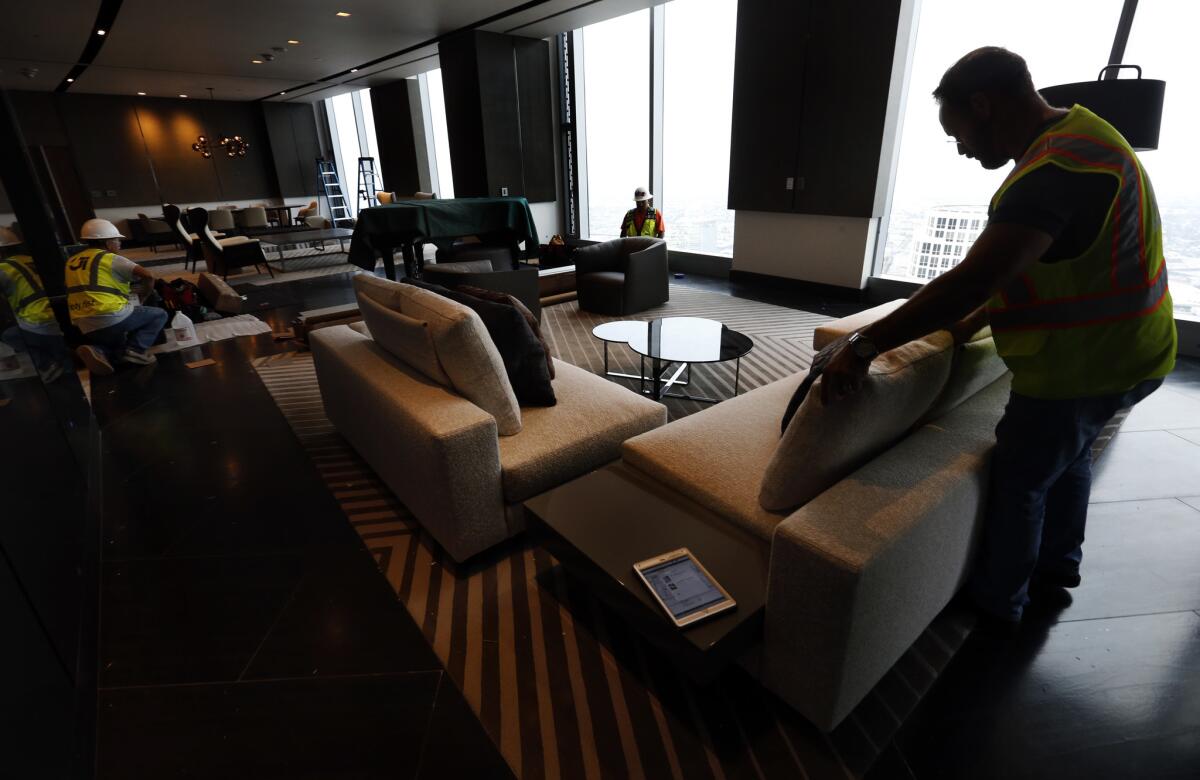
Architect Chris King and the design team with A.C. Martin were challenged early on to brainstorm an interior concept for the new Wilshire Grand tower that reflected Los Angeles’ unique identity.
King took a look at the city, with all its diversity and color, and decided that the interior to the city’s newest building should be a reflection of its exterior. The ecologies surrounding the building, Surfubia, Foothills, The Plains of Id, Autopia and Downtown, would all inform the design.
Chapter Two: Selecting the site
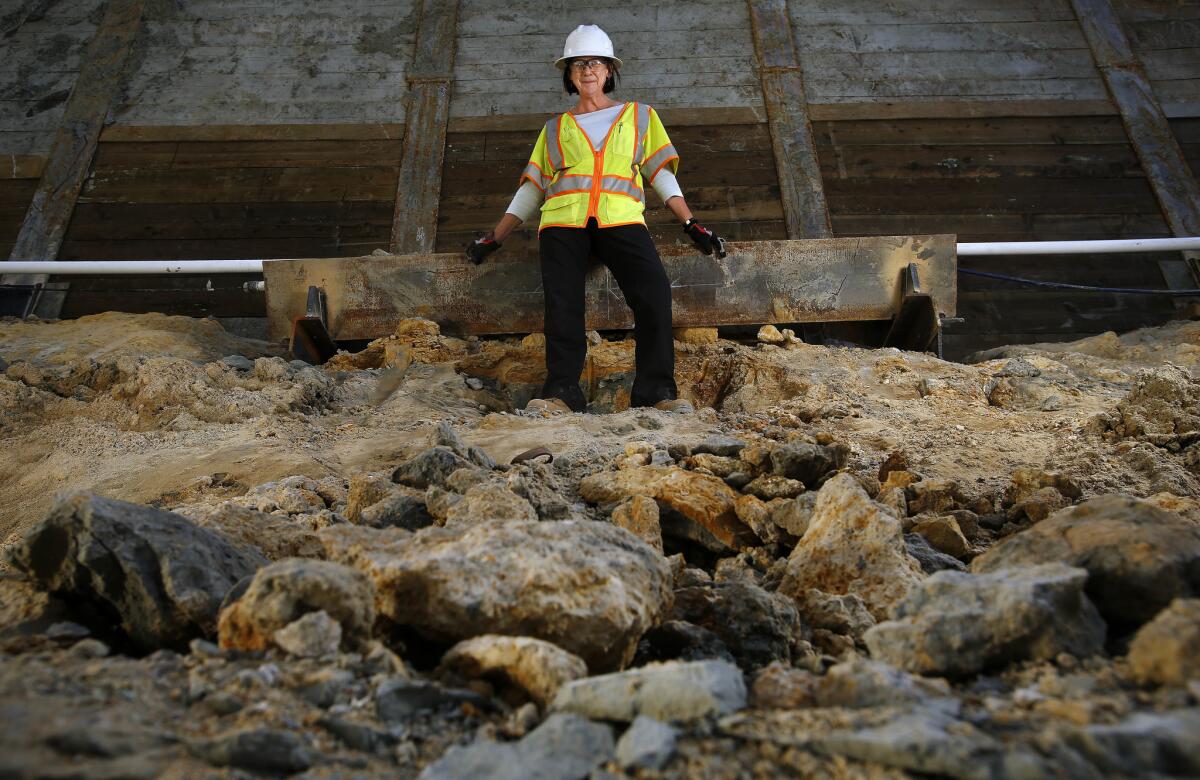
Before the Wilshire Grand tower could get off the ground, someone had to make sure the ground was stable enough to support the tallest skyscraper to be built on seismically sensitive ground.
Geologist Rosalind Munro took on the challenge, travelling eight stories beneath the streets of Los Angeles to answer questions about the stability of the building site.
What will the Wilshire Grand’s legacy be?
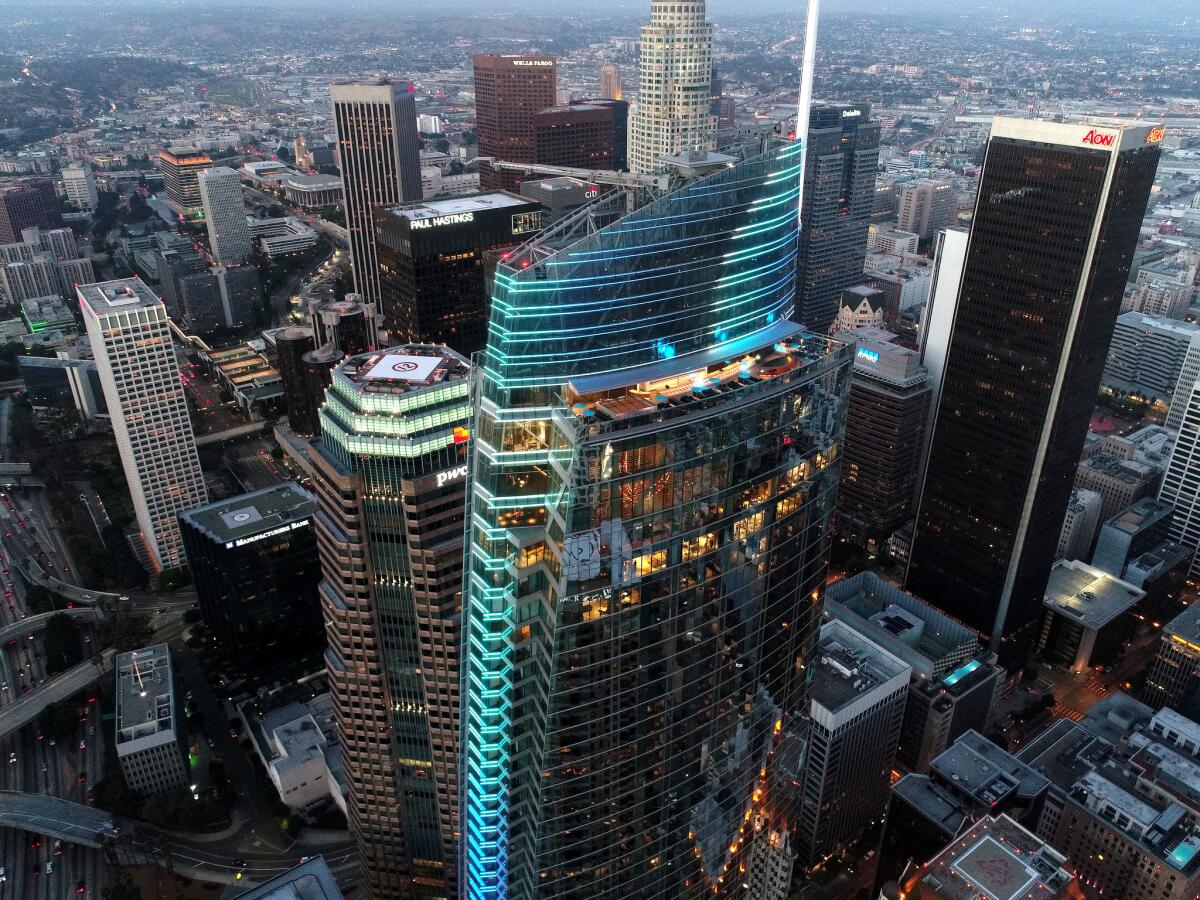
Eight years ago, architect David Martin’s vision for Wilshire Grand Center was little more than a daydream in a sketchbook. Over time, that dream gave way to a 73-story skyscraper, the tallest building west of the Mississippi, and an impressive new addition to the Los Angeles skyline.
Expectations for the building are high. Undoubtedly a new downtown landmark, the tower must find its place within the architecture of the city.
Chapter Three: Clash of titans
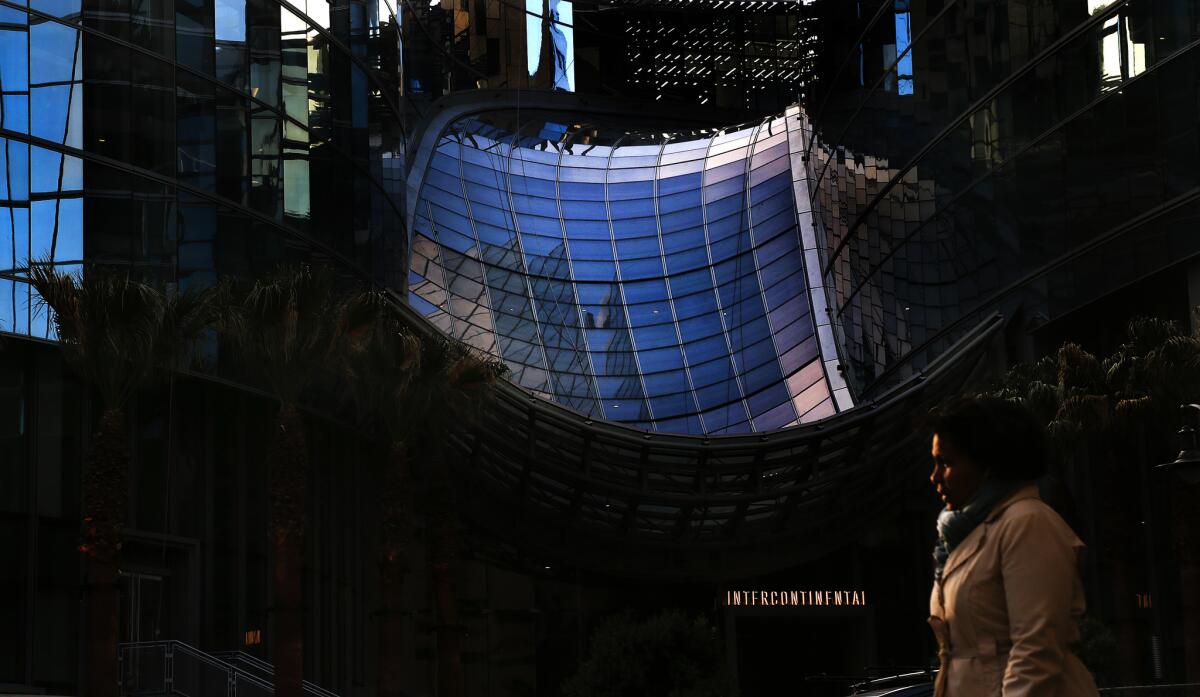
Constructing a building as tall as the new Wilshire Grand is an exercise in compromise and negotiation. The project is a once-in-a-lifetime opportunity to build a landmark in downtown Los Angeles and, according to architect David Martin, everyone had an opinion on plans for the tower.
Concrete versus drywall. Wood versus vinyl. Paint versus wallpaper. Stone versus carpet. Vanity versus hubris. Skylight versus Metro.
Chapter Five: Going up
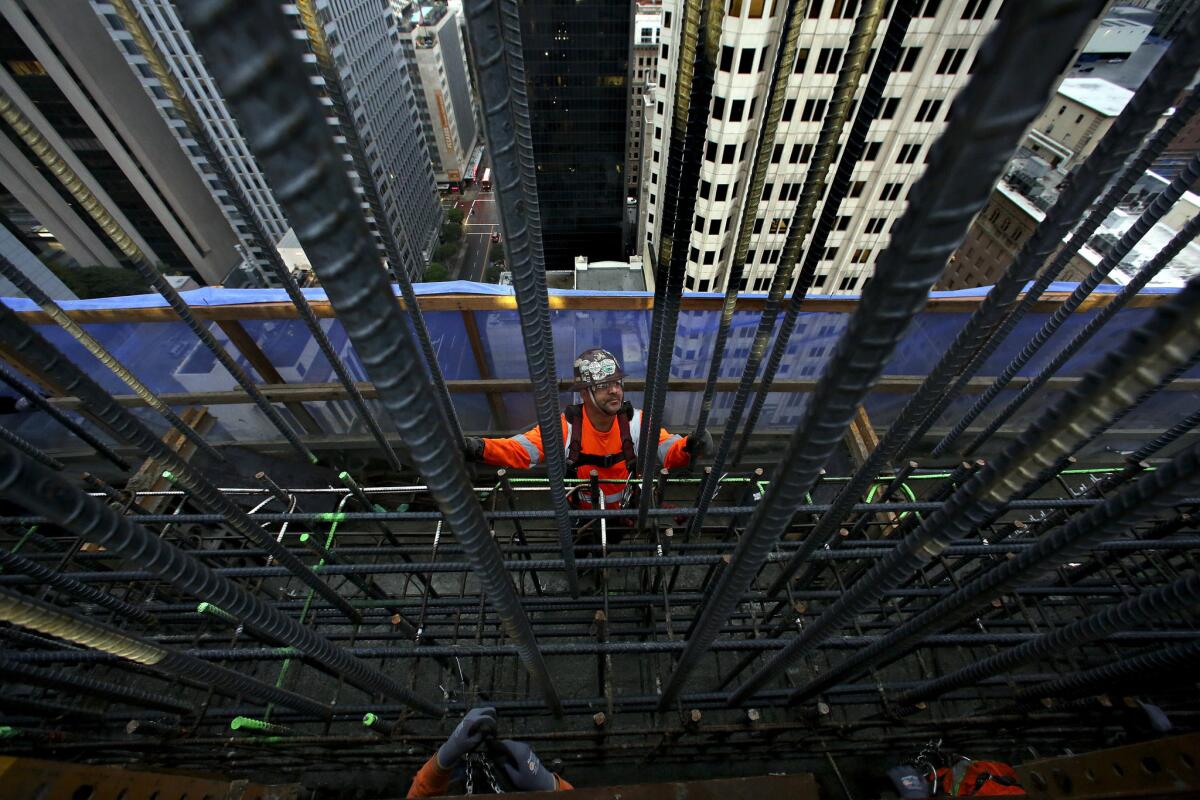
Imagine being taken up to the 19th floor of an unfinished skyscraper in downtown Los Angeles. You step out onto a small platform and climb stairs, suspended from a deck nearly 30 feet overhead, and then up four sets of ladders to the top level, open to the sky. You are wearing 15 pounds of equipment in the tool belt around your waist and are expected to walk a 7 1/2-inch-wide beam to help pull into position 22,000 pounds of steel plates.
Otto Solis and his fellow ironworkers face these challenges every day in the building of the new Wilshire Grand tower.
Chapter Seven: The spire
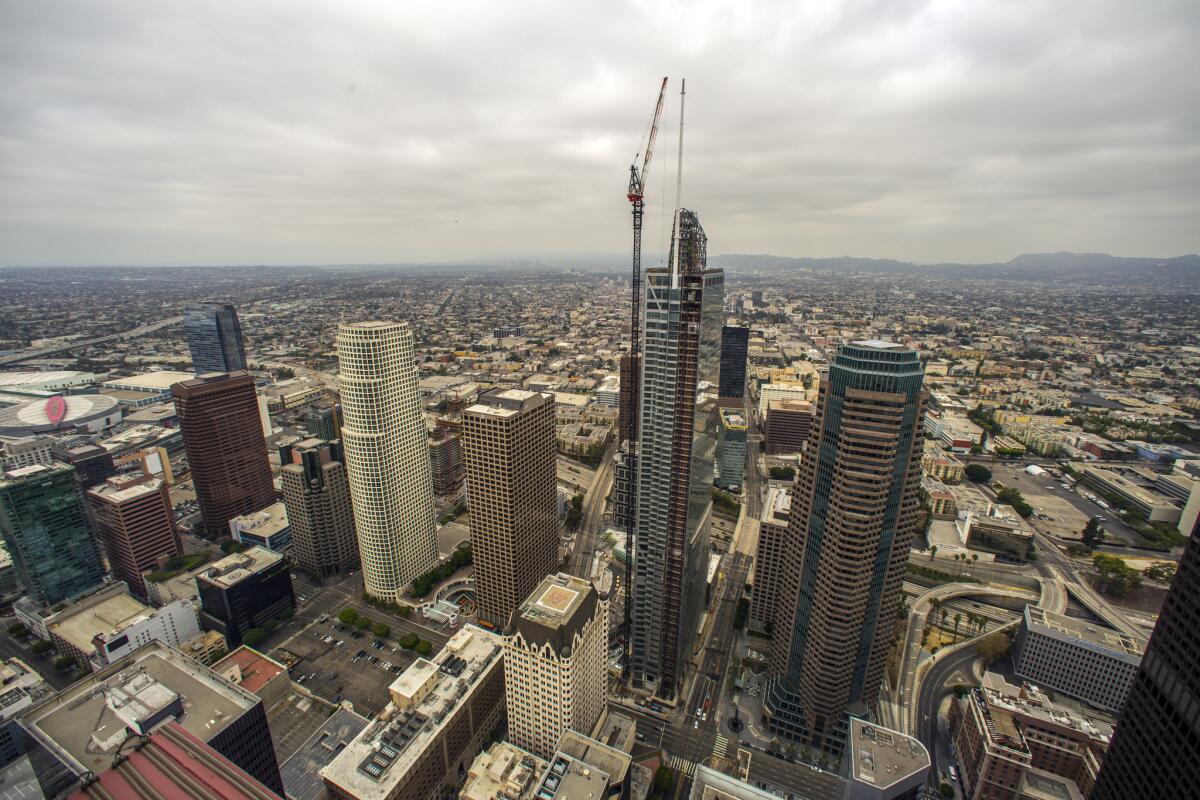
Last September, the Wilshire Grand officially earned its place as the tallest building in the western United States after the 58-foot section of the building’s spire was placed atop the structure. This earned it a place in history as the tallest structure built in an active earthquake zone.
But for Angelenos, the Wilshire Grand is most remarkable for changing the skyline of Los Angeles.
Prior to its construction, skyscrapers in the city have maintained boxy, flat-roofed designs. Now, architects and designers have been given a vision for what a more liberated skyline might look like.
Chapter Four: Seismic chic
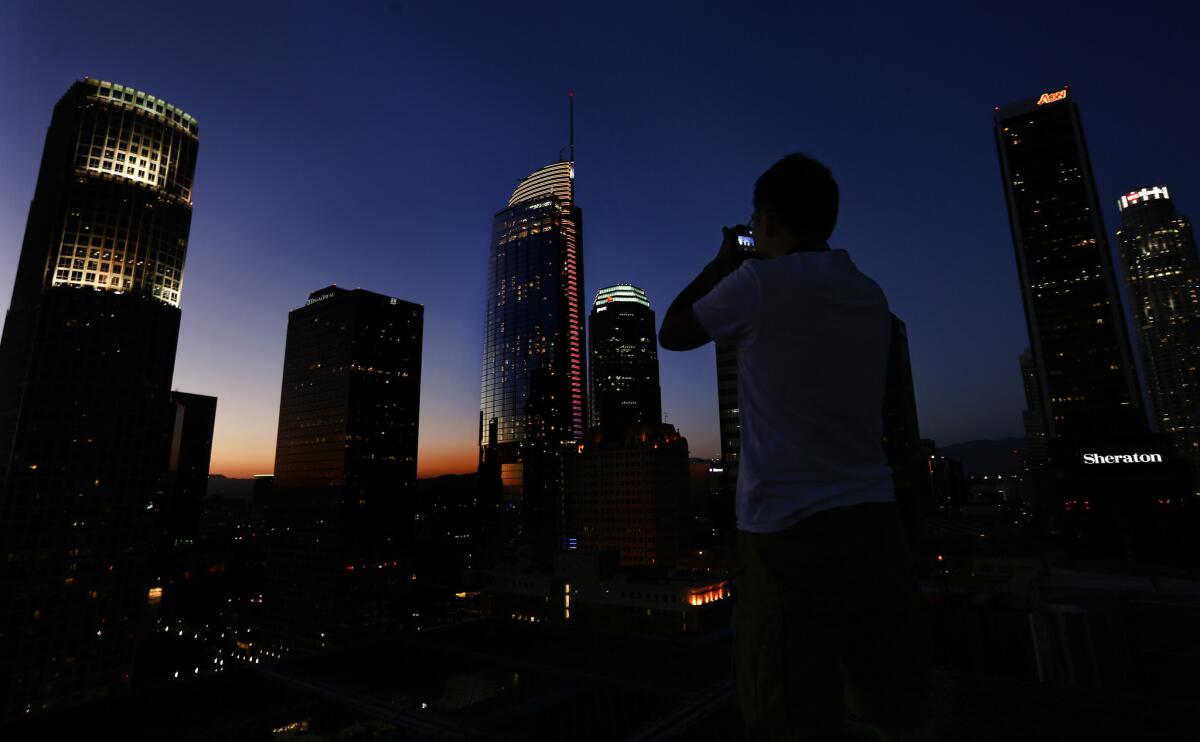
Engineers and architects say it is impossible to guarantee that a building will never collapse in an earthquake. However, if any building has a chance, it’s the new Wilshire Grand.
At Wilshire Boulevard and Figueroa Street, the building’s design has undergone the most sophisticated earthquake modeling performed on a structure in the history of Southern California.
Chapter Six: Topping out
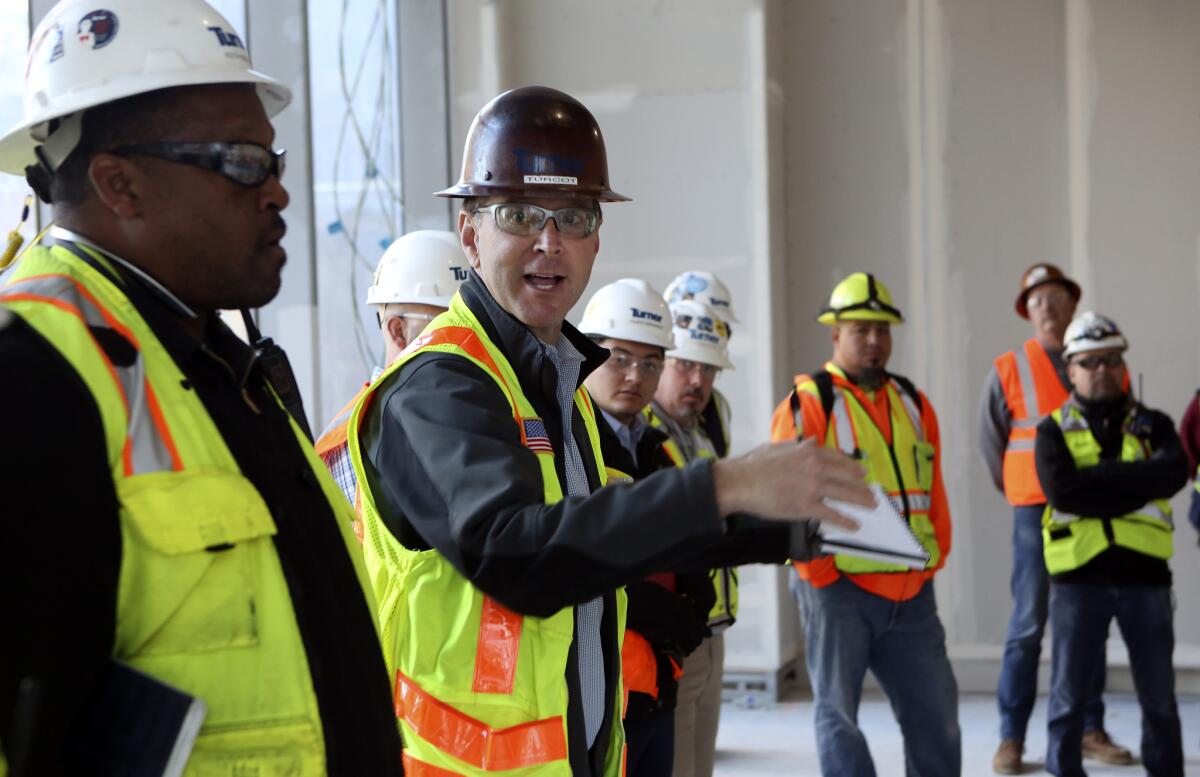
Construction projects celebrate many milestones, especially ones as ambitious as the Wilshire Grand.
In 2013 came the demolition of the 16-story hotel that once occupied the site the tower now occupies. In 2014, workers poured the foundation, a marathon 18-hour event, and now this, the completion of the concrete core, the central pillar of the tower.
The ceremony, known as the “topping out,” is a tradition for high-rises and includes sending the American flag and a small fir tree to the highest point.
But the events on the ground below, complete with barbecue and speeches, were the most symbolic.
Chapter One: The big hole
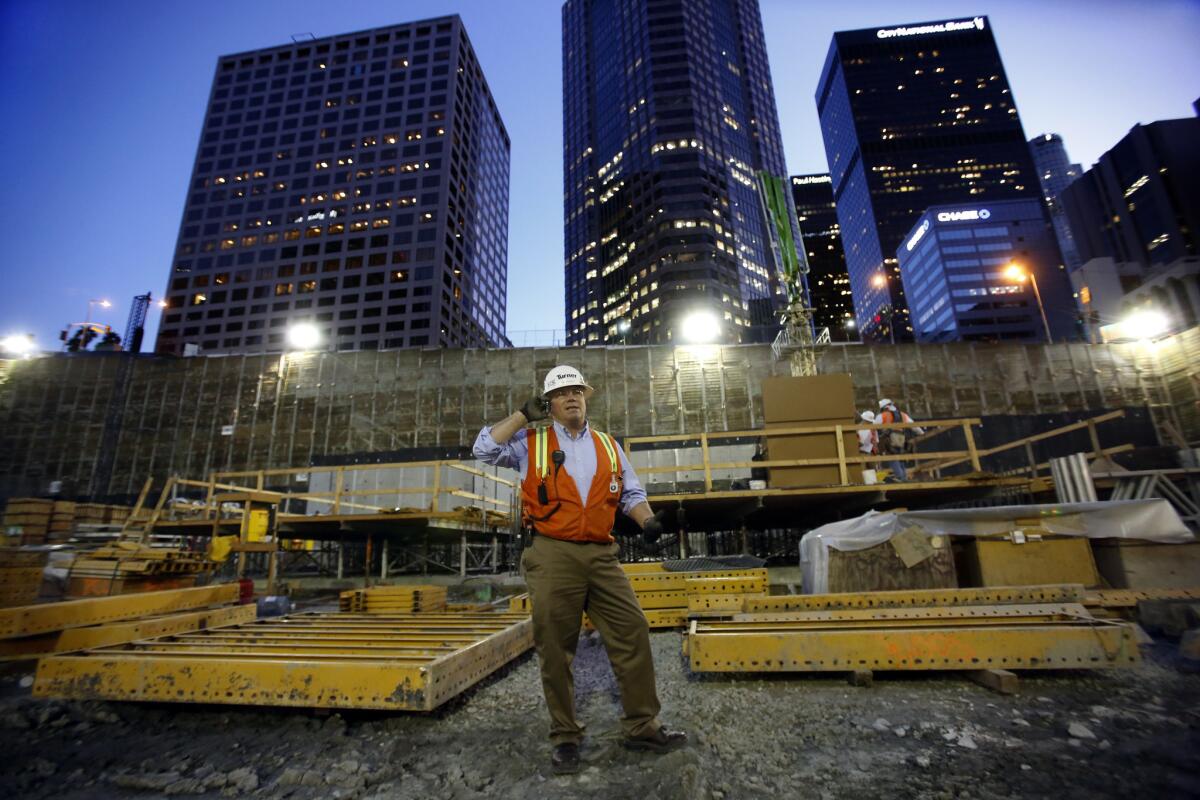
For Michael Marchesano, a general superintendent for Turner Construction Co., the New Wilshire Grand skyscraper represents a career-defining moment as well as a record-breaking one. Not only would the skyscraper be the tallest structure in the western United States, but the construction of its foundation would constitute the longest continuous pour ever recorded.
But before he can break ground on the project, Marchesano and his team need to deal with a giant mound of dirt.